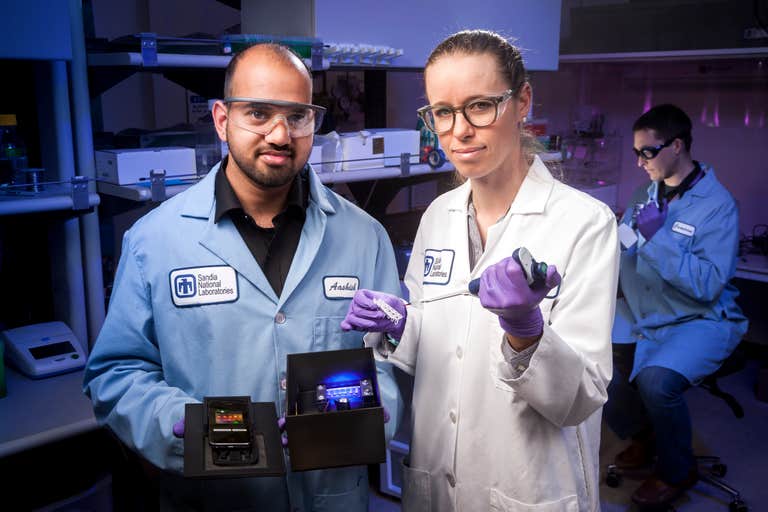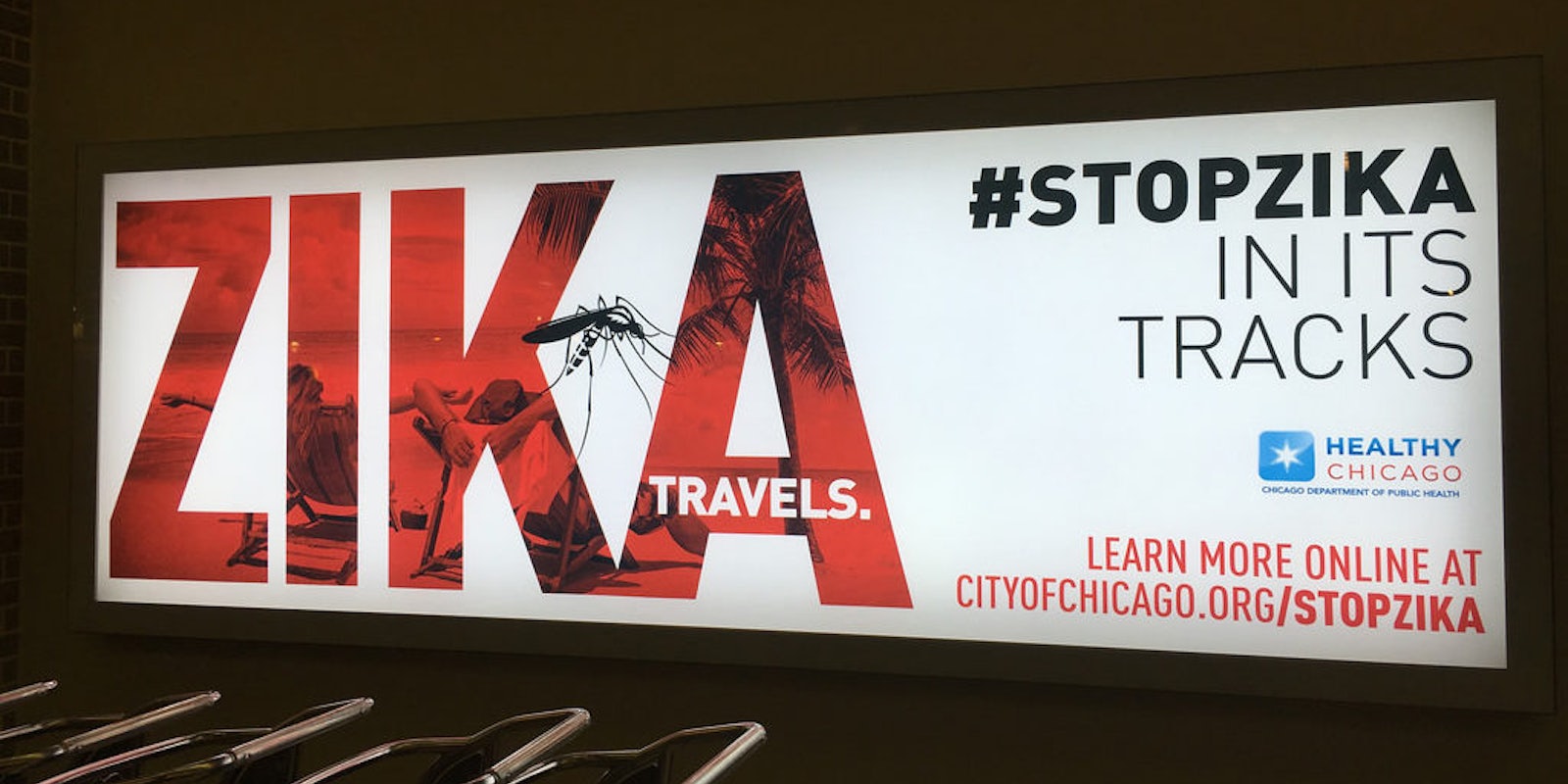Many a world traveler questioned their tropical vacation plans last year after the mosquito-borne Zika virus started making headlines. To test for the disease, which has been tied to a surge of microcephaly cases in infants, physicians look for flu-like symptoms and your recent travel history. They then confirm a diagnosis by testing a blood or urine sample. For modern Western travelers, that’s no big deal. But what about those who may not be able to afford a doctor’s lab tests or clinics unable to afford costly testing equipment in the first place?
Researchers at Sandia National Labs have come up with a diagnostic test for Zika that’s smaller and cheaper than current testing equipment. In fact, it’s based around a smartphone. Like existing tests, it hinges on a blood sample, but then the blood is put through a process called loop-mediated isothermal amplification (LAMP). In this process, a sample mixed with “a few carefully designed biochemical agents” is heated to 150 degrees Fahrenheit for 30 minutes. Any positive DNA fragments in the sample will glow, tagged by a light emitting fluorophore molecule. To check for those positive, glowing reactions, your smartphone (situated over the LAMP box) performs some image recognition using its camera and a dedicated app.
This technique is leagues cheaper than current testing solutions, whose equipment can cost upwards of $20,000. That equipment also tends to be quite large, which, while appropriate for laboratories, isn’t ideal for small clinics. A prototype of this LAMP box, by contrast, can be held in one hand. It’s also faster, with the process only taking half an hour.

“There are billions of smartphones in the world, even in developing countries, and this tool doesn’t require the highest-end smartphone on the market,” chemical engineer and paper lead author Aashish Priye said. “It only needs to have an optical sensor and be able to run the app.”
This solution is just one of a growing number of lab tests and medical diagnostic tools that are moving to the smartphone. For example, in 2014, researchers at the University of Cambridge developed an app that paired with testing strips to monitor a variety of medical conditions. And in 2015, Columbia University researchers developed a mobile-based lab-on-a-chip that could check for HIV and syphilis in only 15 minutes—and cost only $34. Armed with a suite of relatively cheap accessories, physicians working in remote locations could perform a variety of useful, accurate tests minus the lab (and with a fraction of the legwork).
In this case, the app and LAMP box could be used to check not only for Zika but also dengue and chikungunya. These diseases are all spread by the same type of mosquito and result in similar symptoms. Outfitted with these types of tools, clinicians will hopefully be able to identify and treat pandemic threats more quickly and more successfully in the near future.


